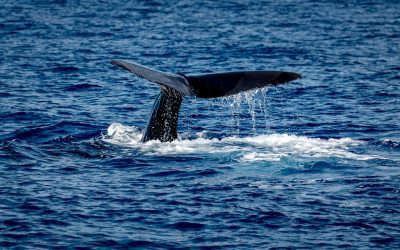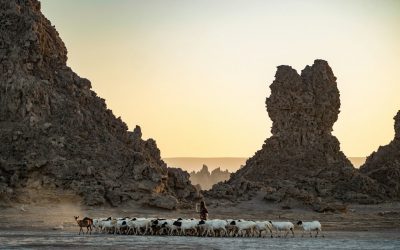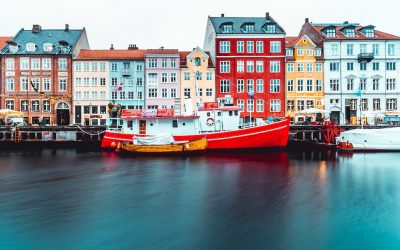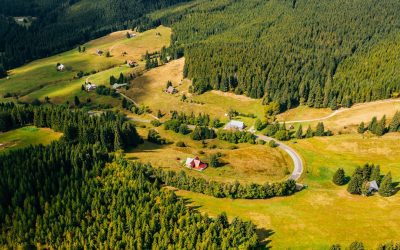Explore the World Through Geography, Natural Resources & Daily History
Clear, reliable and engaging guides that help you understand our planet — from UK geography education to global natural resources and On This Day history events.
Explore, discover, and learn about the wonders of our world! At Earth Site, we’re passionate about bringing geography, history, and science to life for curious minds of all ages. Whether you’re delving into historical events, uncovering the mysteries of the natural world, or seeking interactive resources, you’re in the right place.
Here, you can uncover the stories behind historical events, explore the natural wonders of our planet, and gain valuable insights into how the Earth’s systems shape our daily lives. From the towering peaks of mountain ranges to the far-reaching impacts of human innovation, we aim to make every topic both engaging and informative.
Start your journey of discovery with us today, and let’s make learning an adventure!
What We Cover
Earth Site brings together engaging and accessible educational content designed to help you understand the world, its history, and its natural systems.
🌍 Geography Education (UK & Worldwide)
We publish clear, easy-to-understand geography resources for students, teachers and curious learners. Our guides support geography education in the UK and cover physical geography, climate, ecosystems, population, and global development.
⛏️ Natural Resources & Environmental Geography
Explore detailed country profiles covering natural resources, mining, energy, geology and global environmental challenges. We show how nations manage minerals, water, land and ecosystems, and why these resources matter.
📅 On This Day in History
Every day has a story. Our On This Day history series features major events, anniversaries, traditions, and cultural milestones from around the world — with timelines, context, and fun facts.
TIMELINE
Brexit and Beyond: The Future of the European Union
Brexit, short for “British exit,” refers to the United Kingdom’s decision to leave the European Union. This historic event, which took place on June 23, 2016, has had far-reaching implications for both the UK and the EU. Understanding Brexit and its impact on the EU is crucial for anyone interested in European politics and economics. The European Union is a political and economic union of 27 member states located primarily in Europe. It was established with the aim of promoting peace, stability, and economic prosperity in the region. The EU has evolved over time, expanding its membership and deepening its integration through various treaties and agreements. Summary Brexit has significant implications for the EU, including challenges and opportunities. The history of the EU dates back to its origins and has evolved over time. The future of the EU involves a vision for a united Europe and the role of member states in shaping it. Economic integration is crucial for the success of the EU, but challenges such as migration and security must also be addressed. The EU has a role in promoting democracy, human rights, and tackling climate change and environmental issues. The History of the European Union: From its Origins to Today The European Union has its roots in the aftermath of World War The devastation caused by the war led European leaders to seek ways to prevent future conflicts and promote cooperation among nations. The first step towards European integration was taken with the creation of the European Coal and Steel Community (ECSC) in 1951. Over the years, the EU has grown in size and scope. The...
Exploring Overlapping Interests: A Guide to Visualizing with Venn Diagrams
Venn diagrams are a powerful tool for visualizing and organizing information. They are named after John Venn, a British logician and philosopher who introduced them in the late 19th century. A Venn diagram is a graphical representation of sets or groups, using circles or other shapes to show the relationships between them. It is a way to visually represent the overlap or intersection of different elements. Key Takeaways Venn diagrams are a visual tool used to represent overlapping interests or sets. Understanding overlapping interests is important for identifying commonalities and differences between groups or concepts. The purpose of visualizing with Venn diagrams is to simplify complex information and make it easier to understand. Creating a Venn diagram involves drawing circles and labeling them with the appropriate information. Tips for designing effective Venn diagrams include using clear labels, consistent sizing, and avoiding clutter. Understanding Overlapping Interests Overlapping interests refer to areas or topics that have commonalities or shared characteristics. These can be anything from hobbies and interests to professional fields and academic subjects. For example, if someone is interested in both music and art, there may be an overlap in their appreciation for aesthetics and creativity. Overlapping interests can also occur in more complex scenarios, such as when analyzing data sets or comparing different groups of people. The Purpose of Visualizing with Venn Diagrams Venn diagrams serve several purposes when it comes to visualizing overlapping interests. Firstly, they provide a clear and concise representation of the relationships between different elements. By using circles or other shapes to represent sets, it becomes easier to see where the overlap occurs and how...
Remembering King Hussein Bin Talal of Jordan: A Legacy of Leadership and Humanity
Introduction King Hussein Bin Talal of Jordan, a revered statesman and a symbol of unity, passed away on February 7, 1999. His demise marked the end of an era and left a profound impact on both the people of Jordan and the international community. This article aims to honor his memory and highlight the incredible legacy he left behind. King Hussein Bin Talal of Jordan: A Remarkable Journey King Hussein Bin Talal’s remarkable journey began on November 14, 1935, when he was born in Amman, Jordan. Crowned as the king at the tender age of 17, he ruled the Hashemite Kingdom of Jordan for an unprecedented 46 years until his passing. Passionate Leadership and Political Influence As a leader, King Hussein possessed an unparalleled passion for his country and its people. He dedicated his life to safeguarding Jordan’s sovereignty, promoting regional stability, and advocating for peace in the Middle East. Under his reign, Jordan experienced significant political stability and economic growth, becoming an influential voice in regional affairs. A Bridgebuilder and Peacemaker King Hussein played a pivotal role in mediating conflicts and fostering dialogue between nations. His commitment to peaceful coexistence led to the signing of the historic peace treaty with Israel in 1994, which transformed the region’s geopolitical landscape. His efforts in nurturing diplomatic ties have earned him immense respect and acclaim worldwide. A Beacon of Humanity Beyond his political achievements, King Hussein stood as a beacon of humanity. He championed numerous causes, including education, healthcare, and the empowerment of women. His charitable initiatives, such as the establishment of the King Hussein Cancer Foundation, continue to positively impact...
Discovering the Hidden Gems of Dominica: A British Explorer’s Journey
Nestled in the eastern Caribbean, the island of Dominica is a hidden gem waiting to be discovered. Known as the “Nature Isle of the Caribbean,” Dominica boasts an unspoiled beauty that sets it apart from other tourist destinations in the region. With its lush rainforests, pristine beaches, and diverse wildlife, Dominica is a must-visit destination for nature lovers and adventure seekers alike. Dominica is located between the French islands of Guadeloupe and Martinique. Its unique geographical position has shaped its landscape, making it a haven for natural wonders. The island is volcanic in origin, resulting in dramatic peaks, deep valleys, and hot springs. This volcanic activity has also given rise to some of Dominica’s most famous attractions, such as the Boiling Lake and Trafalgar Falls. Summary Dominica boasts unspoiled natural beauty and cultural heritage worth exploring. Natural wonders like Boiling Lake and Trafalgar Falls are must-see attractions. Meeting the Kalinago people offers a unique cultural experience. Hiking trails like Morne Trois Pitons and Segment 11 offer stunning views. Champagne Beach and Victoria Falls are among the top beaches and waterfalls to visit. The Natural Wonders of Dominica: From Boiling Lake to Trafalgar Falls Dominica’s volcanic landscape has created a playground for nature enthusiasts. One of the island’s most iconic attractions is the Boiling Lake, located in Morne Trois Pitons National Park. This natural wonder is the second-largest boiling lake in the world and is surrounded by steam vents and hot springs. Hiking to the Boiling Lake is a challenging but rewarding experience, offering breathtaking views along the way. Another popular natural attraction in Dominica is Trafalgar Falls. Located near...
Cetacea: The Majestic Marine Mammals of the British Isles
Cetacea is a scientific term used to describe a group of marine mammals that includes whales, dolphins, and porpoises. These fascinating creatures are known for their adaptability to life in the ocean and their unique characteristics such as their blowholes and streamlined bodies. In the British Isles, there is a diverse range of cetacean species that can be found in the surrounding waters. Summary Cetaceans are marine mammals found in the British Isles. The British Isles have a diverse range of cetaceans, including whales, dolphins, and porpoises. Cetaceans play an important role in the marine ecosystems of the British Isles. Conservation efforts are being made to protect cetaceans in the British Isles from threats such as pollution and overfishing. Whale watching is a growing industry in the British Isles, but it is important to do so responsibly to avoid disturbing the animals. The Diversity of Cetaceans in the British Isles The British Isles are home to a variety of cetacean species, each with its own distinct characteristics and habitat preferences. Some of the most commonly seen species include the bottlenose dolphin, harbor porpoise, minke whale, and orca (also known as killer whale). Bottlenose dolphins are one of the most well-known cetaceans in the British Isles. They are highly intelligent and social animals that can be found in coastal waters and estuaries. Harbor porpoises, on the other hand, are smaller in size and prefer shallow coastal waters. They are known for their distinctive triangular dorsal fin. Minke whales are the smallest baleen whales and can often be seen off the coasts of Scotland and Northern Ireland. They are known for...
Discovering the Hidden Gems of Djibouti: A British Traveller’s Guide
Djibouti, located in the Horn of Africa, is a small country that often gets overlooked by travellers. However, this hidden gem is worth exploring for its unique blend of history, culture, and natural beauty. Djibouti has a rich history, with influences from Arab, African, and French cultures. The country’s strategic location on the Red Sea has made it a hub for trade and commerce throughout history. One of the main reasons why Djibouti is a fascinating destination is its diverse landscapes. From stunning beaches to rugged mountains and volcanic formations, Djibouti offers a range of outdoor activities for adventure enthusiasts. The country is also home to several wildlife reserves, where visitors can spot rare species such as the Somali ostrich and the Grevy’s zebra. Summary Djibouti is a hidden gem worth exploring for its unique landscapes and cultural experiences. The best time to visit Djibouti is during the cooler months of November to February. Transportation options to Djibouti include flights and ferries, with visa requirements varying by nationality. Top attractions in Djibouti include the stunning beaches of the Gulf of Tadjoura and the otherworldly landscapes of Lake Assal and Ardoukoba volcano. Cultural experiences in Djibouti include meeting the friendly locals and learning about their traditions, such as the nomadic lifestyle of the Afar people. The Best Time to Visit Djibouti: Seasonal Considerations Djibouti has a hot desert climate, with high temperatures throughout the year. The best time to visit Djibouti is during the cooler months of November to February when temperatures are more bearable for outdoor activities. This is also the peak tourist season, so it’s advisable to book...
The Fascinating Properties of Fluorine: Exploring the Versatile Element
Fluorine, the chemical element with the symbol F and atomic number 9, is a highly reactive and corrosive gas. It was first discovered in 1529 by a German alchemist named Georgius Agricola, who observed that a mineral called fluorspar emitted a blue glow when exposed to heat. However, it wasn’t until the 19th century that fluorine was isolated and identified as an element. In 1886, French chemist Henri Moissan successfully isolated fluorine using electrolysis. He used a mixture of potassium fluoride and hydrogen fluoride as the electrolyte and passed an electric current through it. This groundbreaking discovery earned Moissan the Nobel Prize in Chemistry in 1906. Today, fluorine is an essential element in modern society. It is widely used in various industries, including pharmaceuticals, manufacturing, and dentistry. Its unique properties make it valuable for a range of applications, from creating non-stick coatings to producing high-performance plastics. Summary Fluorine was discovered in 1886 by a French chemist named Henri Moissan. Fluorine’s atomic structure consists of 9 protons, 9 electrons, and 10 neutrons. Fluorine’s high electronegativity makes it a strong oxidizing agent and allows it to form strong bonds with other elements. Fluorine’s reactivity is due to its small atomic size and high electronegativity, which allows it to easily gain or lose electrons. Fluorine is used in a variety of industries, including the production of refrigerants, plastics, and pharmaceuticals. The Atomic Structure of Fluorine: Understanding the Element’s Properties Fluorine has an atomic number of 9, which means it has 9 protons in its nucleus. It also has 9 electrons, arranged in two energy levels: 2 in the first level and 7...
Mastering Set Operations: A Guide to Efficiently Manipulating Sets
Set operations are fundamental concepts in mathematics and computer science that involve manipulating collections of objects. A set is a collection of distinct elements, and set operations allow us to combine, compare, and manipulate sets in various ways. These operations are essential in many areas of mathematics, such as algebra, calculus, and probability theory, as well as in computer science, where they are used in data analysis, database management, and network analysis. Key Takeaways Set operations are used to manipulate and compare sets of data. Basic set operations include union, intersection, and complement. Union combines two sets into one, while intersection finds the common elements. Venn diagrams can be used to visualize set operations. Python offers efficient tools for manipulating sets. Understanding the Basic Set Operations The basic set operations include union, intersection, difference, and complement. The union of two sets A and B is the set that contains all the elements that are in either A or B (or both). The intersection of two sets A and B is the set that contains all the elements that are common to both A and B. The difference of two sets A and B is the set that contains all the elements that are in A but not in B. The complement of a set A with respect to a universal set U is the set that contains all the elements in U that are not in A. For example, let’s consider two sets A = {1, 2, 3} and B = {3, 4, 5}. The union of A and B is {1, 2, 3, 4, 5}, as it contains...
Discovering Denmark: A Journey Through the Charming Land of Vikings and Hygge
Denmark, located in Northern Europe, is a country known for its rich history and vibrant culture. With a population of approximately 5.8 million people, Denmark is a small but significant country. The country is made up of the Jutland Peninsula and numerous islands, including Zealand, where the capital city of Copenhagen is located. Denmark has a fascinating history that dates back thousands of years. It was once home to the Vikings, a seafaring people who played a significant role in European history. Today, Denmark is known for its modern and progressive society, but it still retains its historical charm. The Danish culture is deeply rooted in traditions and customs that have been passed down through generations. The Danish people are known for their friendliness, hospitality, and love for nature. They take pride in their heritage and are eager to share it with visitors. Summary Denmark is a country with a rich history and culture. The Viking heritage of Denmark is worth exploring. Hygge, the Danish concept of coziness and comfort, is a must-experience. Denmark boasts beautiful landscapes and hidden gems in its capital city, Copenhagen. Danish cuisine, art and design, royal legacy, sustainable lifestyle, and festivals are all worth discovering. Exploring the Viking Heritage of Denmark Denmark has a rich Viking heritage that can be traced back to the 8th century. The Viking Age in Denmark was a time of exploration, trade, and conquest. The Vikings were skilled seafarers who traveled far and wide, leaving their mark on the lands they encountered. Visitors to Denmark can explore this Viking heritage by visiting museums and historical sites dedicated to the...
Carnivora Chronicles: A British Guide to Canine, Feline, Bears, Racoons, Sea Lions and Seals
Carnivora Chronicles is a blog dedicated to exploring the fascinating world of carnivores. In this article, we will be focusing specifically on the carnivores found in Britain. While Britain may not be known for its diverse range of carnivorous species, it is home to a number of interesting and unique animals. From wild canines to mighty bears, raccoons to seals and sea lions, the British Isles have their fair share of carnivorous inhabitants. Join us as we delve into the world of British carnivores and discover the wonders of these remarkable creatures. Summary Carnivora Chronicles is a British guide to various carnivorous animals, including canines, felines, bears, racoons, sea lions, and seals. The wild canines of Britain range from foxes to wolves, and they play an important role in the ecosystem. Feline frenzy covers the cats of Britain, including domestic cats, wildcats, and lynx. The mighty bears of Britain include brown and black bears, and they are a rare sight in the wild. Racoons on the rise introduces the invasive species and the potential impact on the ecosystem. The seals and sea lions of Britain are a coastal delight, and they are important for maintaining the balance of the marine ecosystem. Carnivorous animals have a varied diet, ranging from meat to fish and insects. Carnivores play a crucial role in the ecosystem, regulating prey populations and maintaining the balance of nature. Conservation efforts are underway to protect carnivorous species in Britain, including habitat preservation and anti-poaching measures. Fascinating facts about carnivores include their hunting techniques, social behavior, and unique adaptations for survival. The Wild Canines of Britain One of...
Exploring the Hidden Gems of the Czech Republic: A Journey Through Bohemia and Beyond
The Czech Republic is a country that is often overlooked as a travel destination, overshadowed by its more popular neighbors such as Germany and Austria. However, this Central European gem has so much to offer to the intrepid traveler. From its stunning architecture and rich history to its picturesque countryside and delicious cuisine, the Czech Republic is a destination that should not be missed. When most people think of the Czech Republic, they immediately think of Prague, the country’s capital and most popular tourist destination. While Prague is undoubtedly a must-visit city with its beautiful Old Town Square, Prague Castle, and Charles Bridge, there is so much more to explore beyond the capital. The country is dotted with charming towns and villages, enchanting castles and chateaus, and breathtaking natural landscapes. In this article, we will uncover the lesser-known treasures of the Czech Republic and take you on a journey through its hidden gems. Summary The Czech Republic is home to many hidden treasures waiting to be discovered. Bohemia is a must-visit destination for those seeking a journey through time and hidden gems. The countryside is dotted with enchanting castles and chateaus that are worth exploring. Quaint towns and villages offer a glimpse into the rich history and culture of the Czech Republic. The natural wonders of the country, from forests to mountains, are breathtaking and not to be missed. Uncovering the Lesser-Known Treasures of the Czech Republic While popular tourist attractions are undoubtedly worth visiting, there is something special about discovering lesser-known destinations. These hidden gems often offer a more authentic experience, away from the crowds of tourists. They...
Exploring the Power of Sets: How Organizing Data Can Revolutionize Your Workflows
Sets are a fundamental concept in mathematics and data management. In simple terms, a set is a collection of distinct objects, called elements, that are grouped together based on a common characteristic or property. These elements can be anything, such as numbers, letters, or even other sets. Sets are denoted by curly braces {} and the elements are separated by commas. One important aspect of sets is that they do not contain duplicate elements. Each element in a set is unique and appears only once. This property makes sets particularly useful in data management, as it allows for efficient storage and retrieval of data. Additionally, sets can be used to perform various operations, such as union, intersection, and difference, which enable manipulation and analysis of data. Key Takeaways Sets are a fundamental concept in mathematics and computer science that represent a collection of unique elements. Sets can be used in data management to eliminate duplicates, simplify data structures, and improve efficiency. By using sets, you can streamline your workflow by reducing the time and effort required to manage and analyze data. Set theory can be applied to organize data into categories, subsets, and relationships, making it easier to understand and analyze. Sets play a crucial role in data analysis and visualization, allowing you to identify patterns, trends, and outliers in your data. The Advantages of Using Sets in Data Management Using sets in data management offers several advantages over other data structures. Firstly, sets allow for efficient storage and retrieval of data. Since sets do not contain duplicate elements, they eliminate the need to store redundant information. This not...











